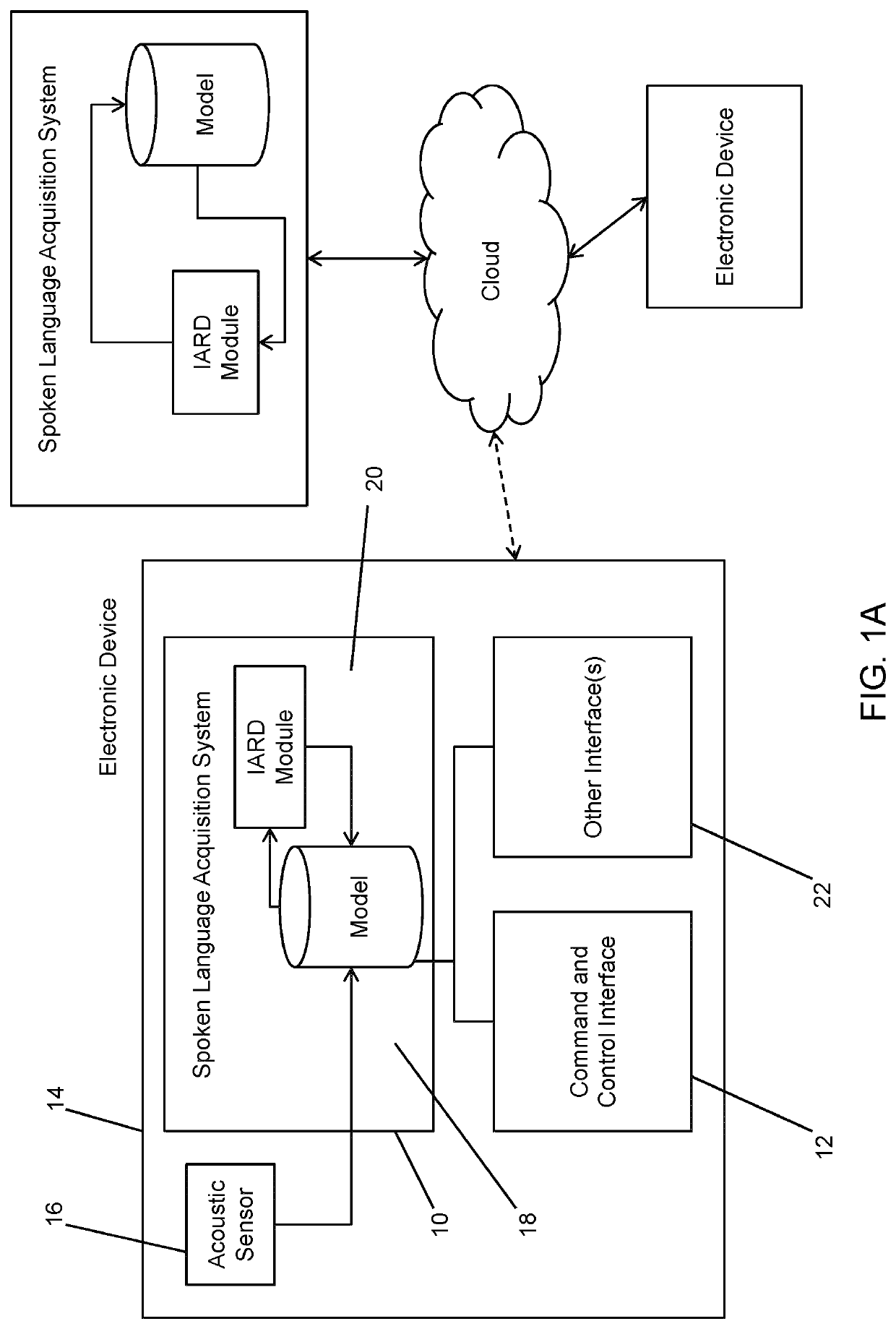Method and device for automatically learning relevance of words in a speech recognition system
automatic learning technology, applied in the field of automatic learning relevance of words in a speech recognition system, can solve the problems of difficult design of a good command-and-control interface for all users, difficult to satisfy all potential users, and more and more difficult to communicate user's intentions or selections through traditional means
- Summary
- Abstract
- Description
- Claims
- Application Information
AI Technical Summary
Benefits of technology
Problems solved by technology
Method used
Image
Examples
examples and experiments
Database Example:
[0081]The database used in embodiments of the present invention is referred to as “Syncom”. Syncom contains spoken commands from users for various electronic devices like a smartphone or a GPS. Each user recorded 3 sets of 16 commands. All sets contain the same semantic representations but the commands are given in a different way, e.g. “Skip this song” is a different command as “Play the next track” but the semantic representation is the same. In total 5 users have been recorded and every command was repeated 5 times. Not all commands that have the same semantics are completely different from each other. Some corresponding commands contain some keywords that are the same e.g. “Put on some jazz” and “Play some jazz”.
Testing Scenario
[0082]The goal of these experiments is to evaluate the system's ability to add new words to the dictionary or remove them if they are no longer used and everything has to be learned incrementally. To test the system's ability to do so we ...
PUM
 Login to View More
Login to View More Abstract
Description
Claims
Application Information
 Login to View More
Login to View More - R&D
- Intellectual Property
- Life Sciences
- Materials
- Tech Scout
- Unparalleled Data Quality
- Higher Quality Content
- 60% Fewer Hallucinations
Browse by: Latest US Patents, China's latest patents, Technical Efficacy Thesaurus, Application Domain, Technology Topic, Popular Technical Reports.
© 2025 PatSnap. All rights reserved.Legal|Privacy policy|Modern Slavery Act Transparency Statement|Sitemap|About US| Contact US: help@patsnap.com



